Transform Your Home with Festive Decor
Indian festivals are a rich tapestry of colors, traditions, and rituals deeply rooted in our cultural heritage. These celebrations bring families together and offer an opportunity to transform our homes into vibrant, welcoming spaces that reflect the joyous spirit of the season. Whether it's Diwali, Holi, Durga Puja, or Christmas, preparing your home for these festivals can be a delightful experience. Here are ten creative tips to help you infuse your home with festive cheer.
Declutter and Spark Joy
Before you dive into decorating, give your home a thorough clean. A clutter-free environment looks better and allows positive energy to flow freely. Clear out unnecessary items, tidy up each room, and scrub surfaces to create a fresh slate for your festive decor. A clean home sets the stage for an inviting and organised space.
Pick Your Palette Like a Pro
Selecting a cohesive color scheme and theme that aligns with the festival will help create a harmonious look throughout your home. Traditional festival colors, such as gold, silver, red, green, yellow, and blue, can add vibrancy and authenticity to your decorations. Stick to a palette that resonates with the festival to ensure a unified and visually appealing design.
Light it up
Lighting is essential in setting a festive ambiance. Fairy lights, lanterns, and candles add warmth and charm to your home. Strategically place these lights around key decor pieces, windows, and doorways. The soft, twinkling glow will enhance the festive atmosphere and create a welcoming environment for guests.
Luxe Fabrics, Luxe Feels
Swap out your everyday textiles for more festive and luxurious options. Opt for rich fabrics like silk or velvet for tablecloths, cushion covers, and curtains. These elements instantly elevate the look of your home and add a touch of elegance and celebration.
Indian festivals are a rich tapestry of colors, traditions, and rituals deeply rooted in our cultural heritage. These celebrations bring families together and offer an opportunity to transform our homes into vibrant, welcoming spaces that reflect the joyous spirit of the season. Whether it's Diwali, Holi, Durga Puja, or Christmas, preparing your home for these festivals can be a delightful experience. Here are ten creative tips to help you infuse your home with festive cheer.
Declutter and Spark Joy
Before you dive into decorating, give your home a thorough clean. A clutter-free environment looks better and allows positive energy to flow freely. Clear out unnecessary items, tidy up each room, and scrub surfaces to create a fresh slate for your festive decor. A clean home sets the stage for an inviting and organised space.
Blossom into the Festive Spirit
Bring life and color into your home with fresh flowers and plants. Traditional floral arrangements or simple vases with seasonal blooms can significantly impact. Flowers not only add visual appeal but also contribute to the overall festive spirit of your home.
Accessorise with Tradition
Incorporate decorative accessories to enhance the festive feel. Use decorative bowls filled with colorful ornaments, candles, or potpourri. Traditional diyas, rangoli designs, or wreaths can enrich the festive atmosphere and add a personal touch.
Bring life and color into your home with fresh flowers and plants. Traditional floral arrangements or simple vases with seasonal blooms can significantly impact. Flowers not only add visual appeal but also contribute to the overall festive spirit of your home.
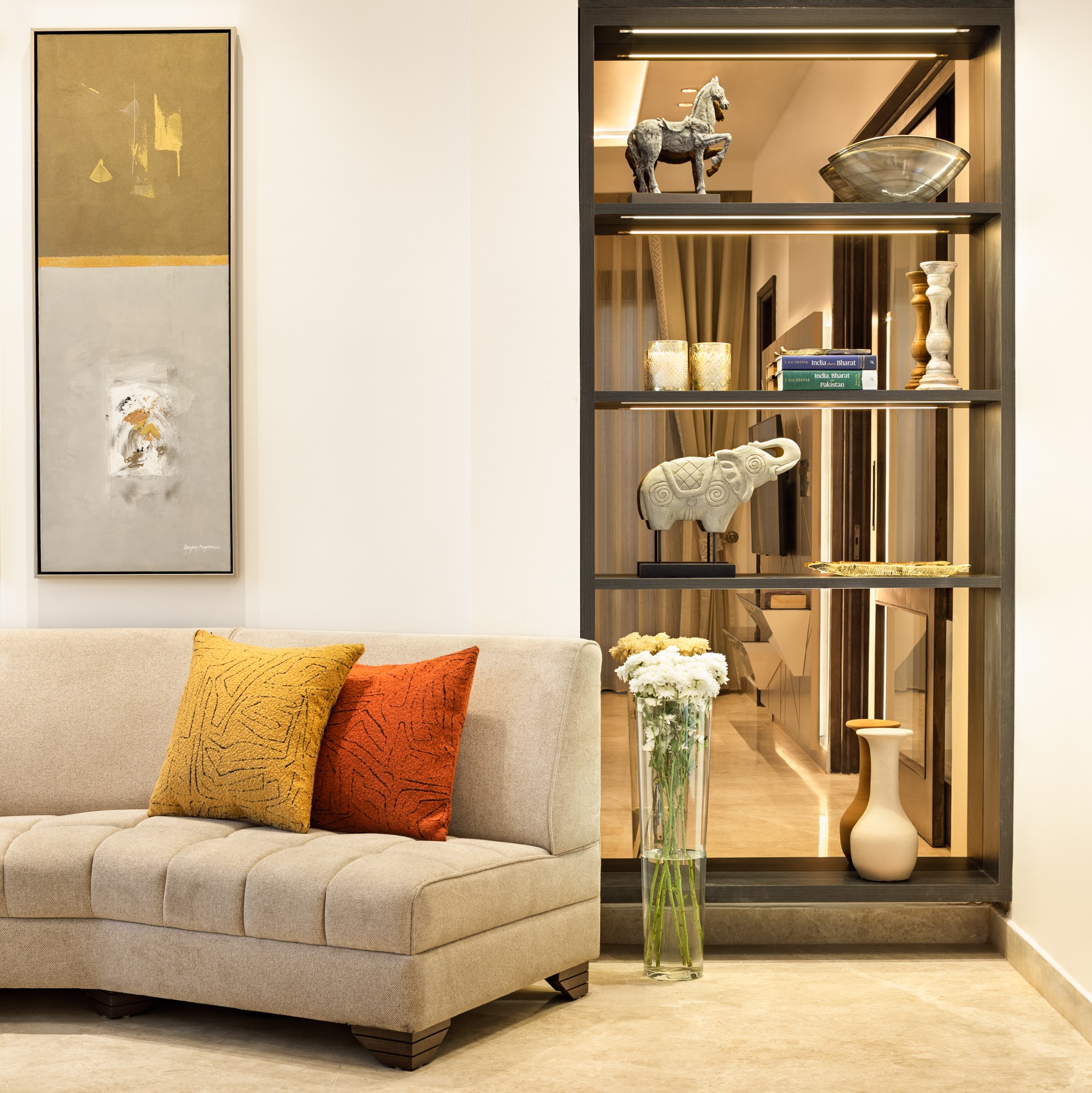
Accessorizing shelves with festive décor can instantly bring a celebratory vibe to a space, like here in Terra, Gwalior.
Feast in Style
Make your dining table a focal point by paying attention to its decor. Use elegant tableware, festive centerpieces, and themed napkins to create a stunning table setting. A beautifully set table looks impressive and makes meals celebratory.
Add Personal Touch
Add personal touches to your decor to make it feel more meaningful. Incorporate family photos, handmade crafts, or heirloom pieces that resonate with the festival. These elements add warmth and a sense of personal connection, making your home’s festive decor unique and heartfelt.
Scent-sational or fragrance fest
Scents like incense, scented candles, or essential oil diffusers with fragrances that complement the festival theme, such as sandalwood, jasmine, rose, or cinnamon, should be leveraged. The right scent can elevate the ambiance and make the festive experience more immersive.
Spruce Up Your Outdoor Space
Extend the festive spirit outside of your home as well. Hang marigold flowers, place lanterns on the porch, and light diyas to create a welcoming entrance. Seasonal outdoor decorations help set the tone for guests before they even step inside and add to the overall festive charm of your home.
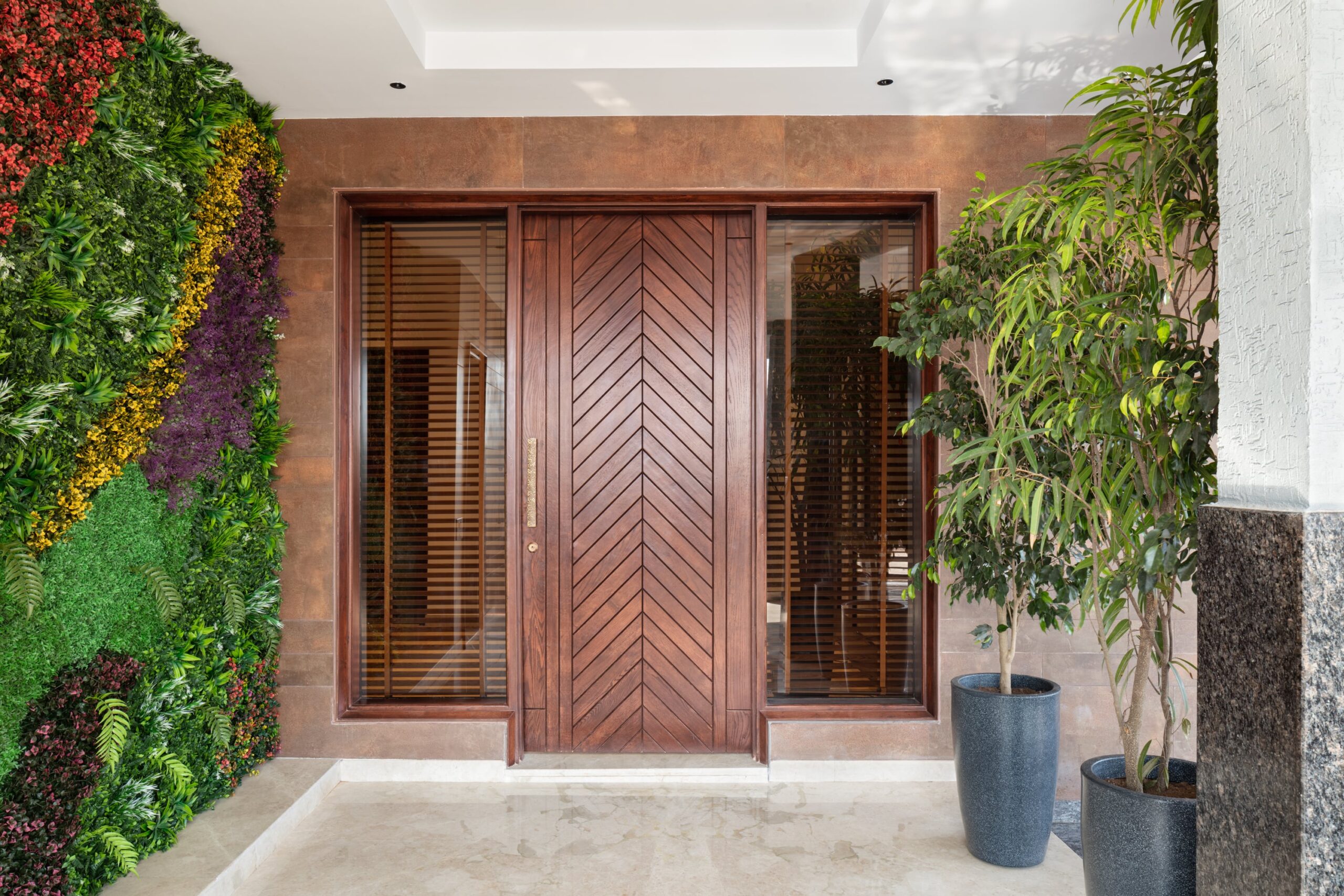
Transform outdoor spaces with greenery and thoughtful d to create a lively, inviting atmosphere, as exemplified in Terra, Gwalior.
Transform your home into a festive retreat that radiates warmth and joy. With a touch of thoughtful decor, you can create a space that's not only visually stunning but also inviting and cozy. Embrace the season with decorations that make your home a true reflection of celebration. Enjoy every moment of decorating, and let your space become a haven for the season.











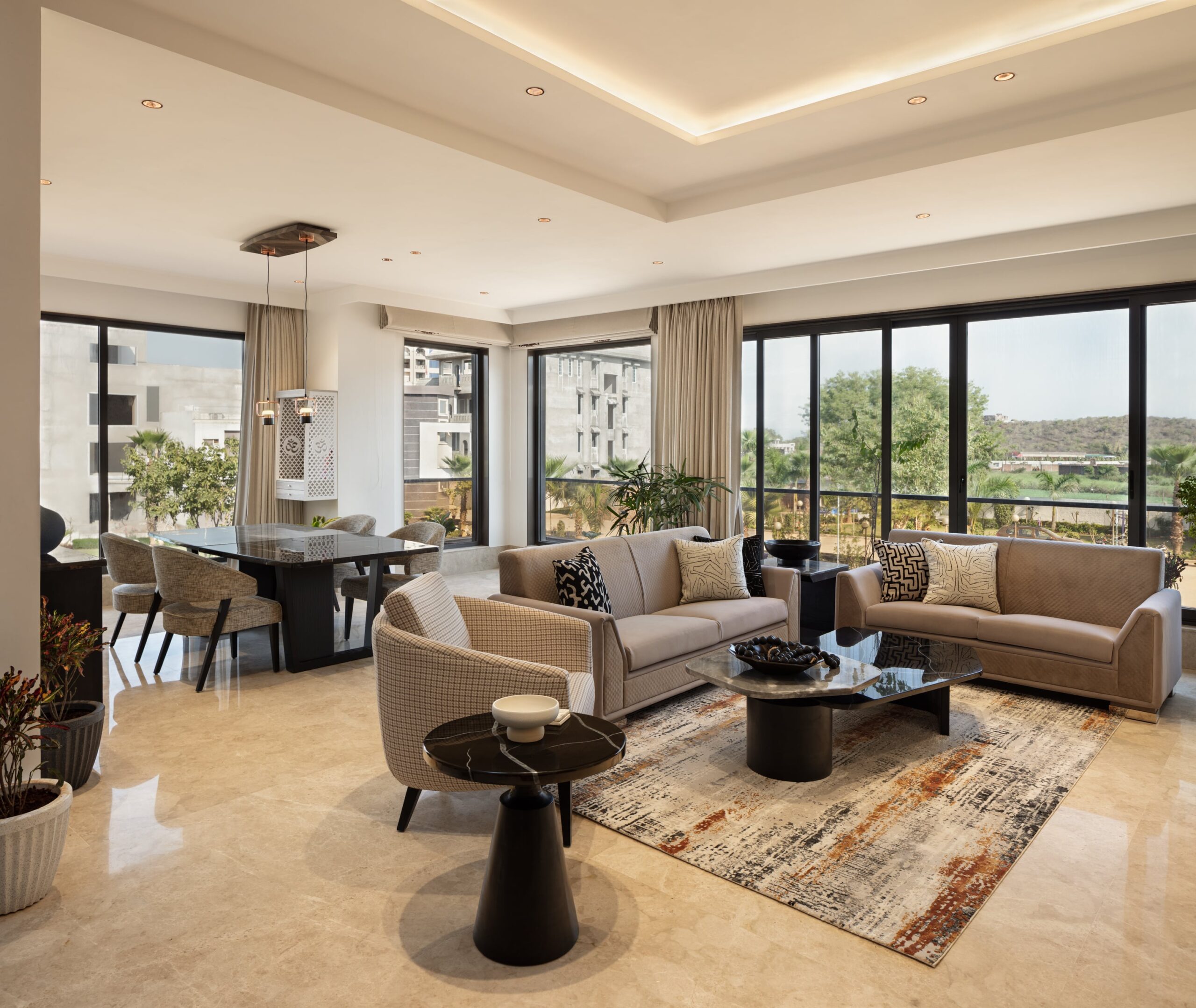
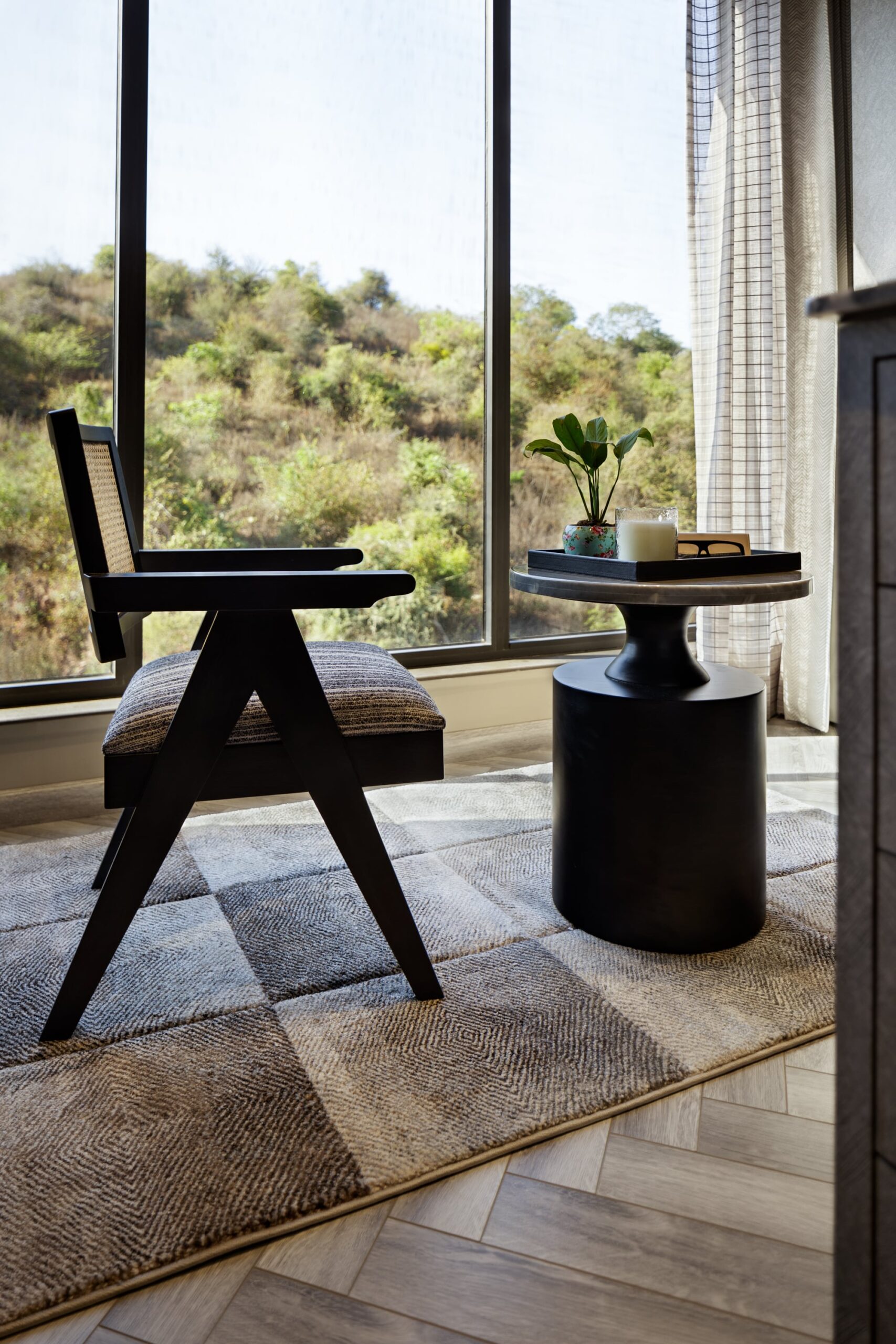
 Photography: Noughts & Crosses | Project: Treetops, New Delhi
Photography: Noughts & Crosses | Project: Treetops, New Delhi



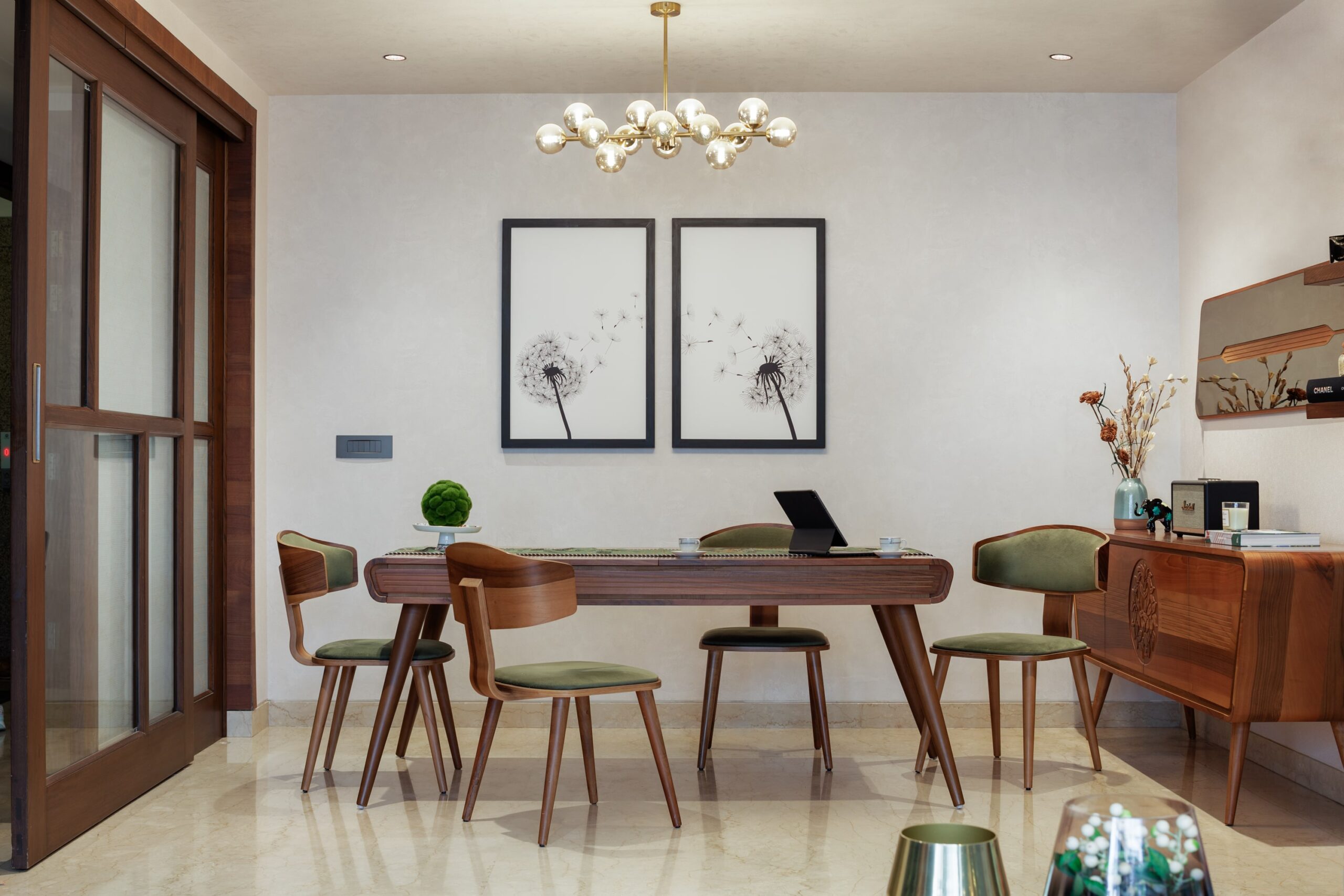
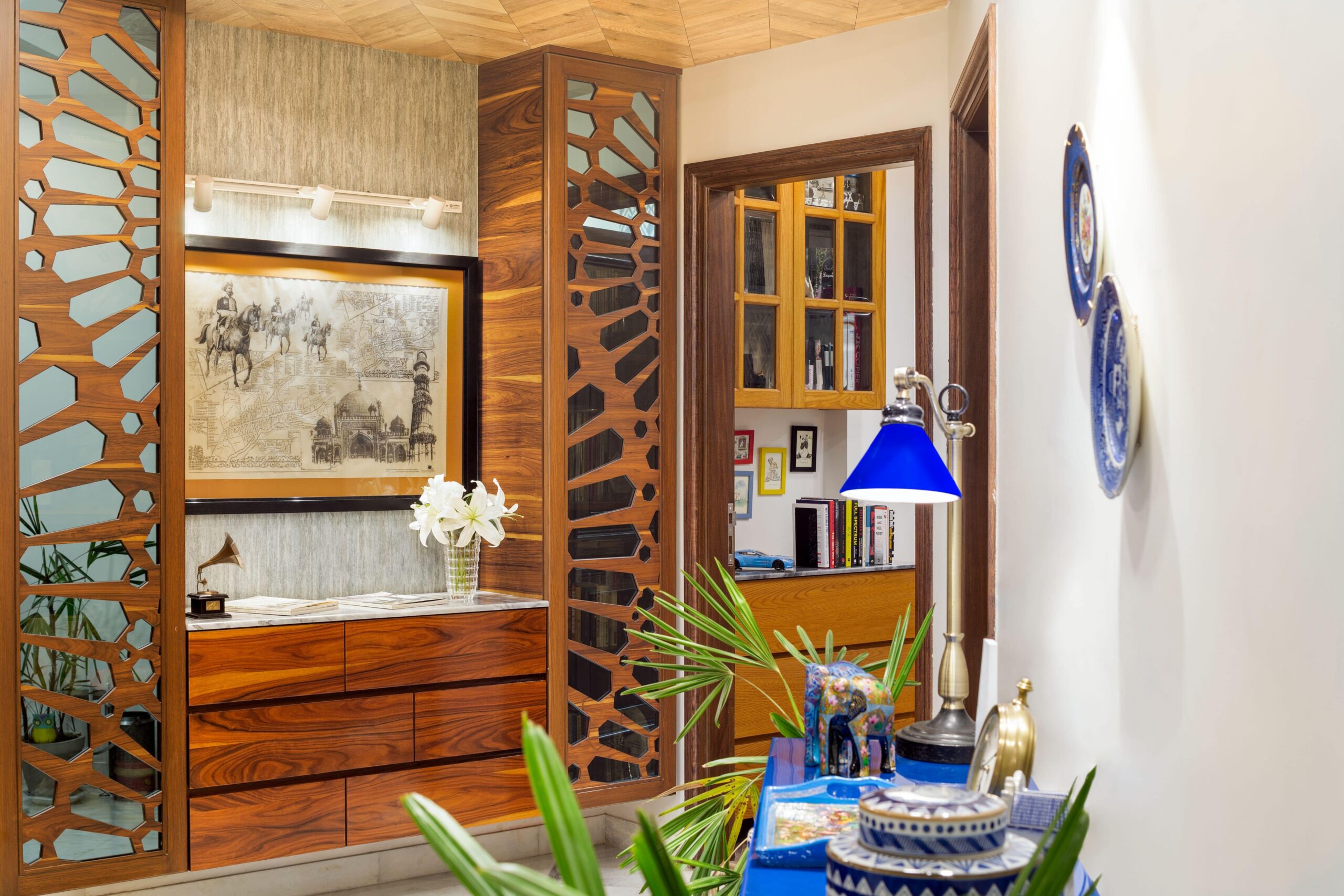
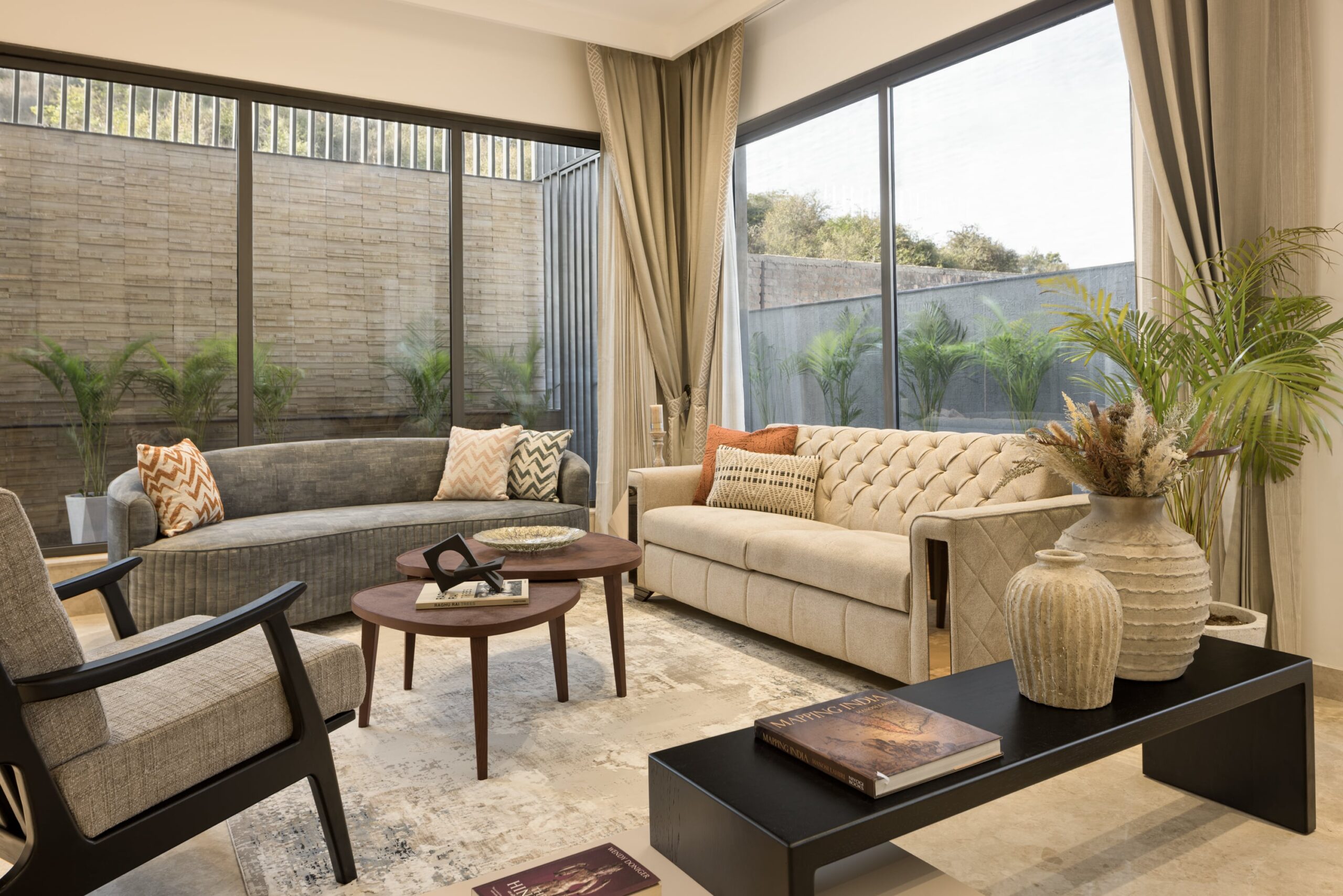
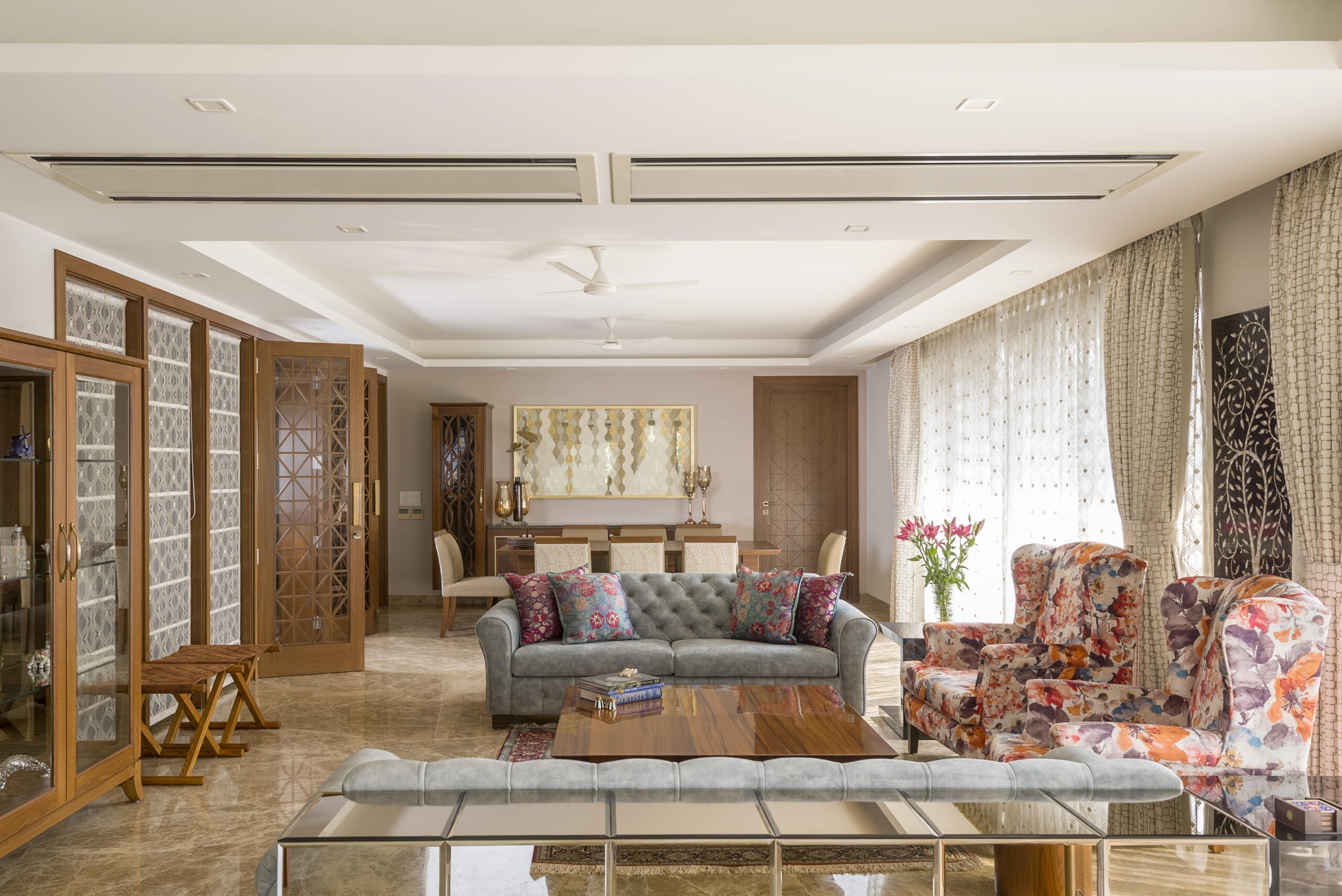

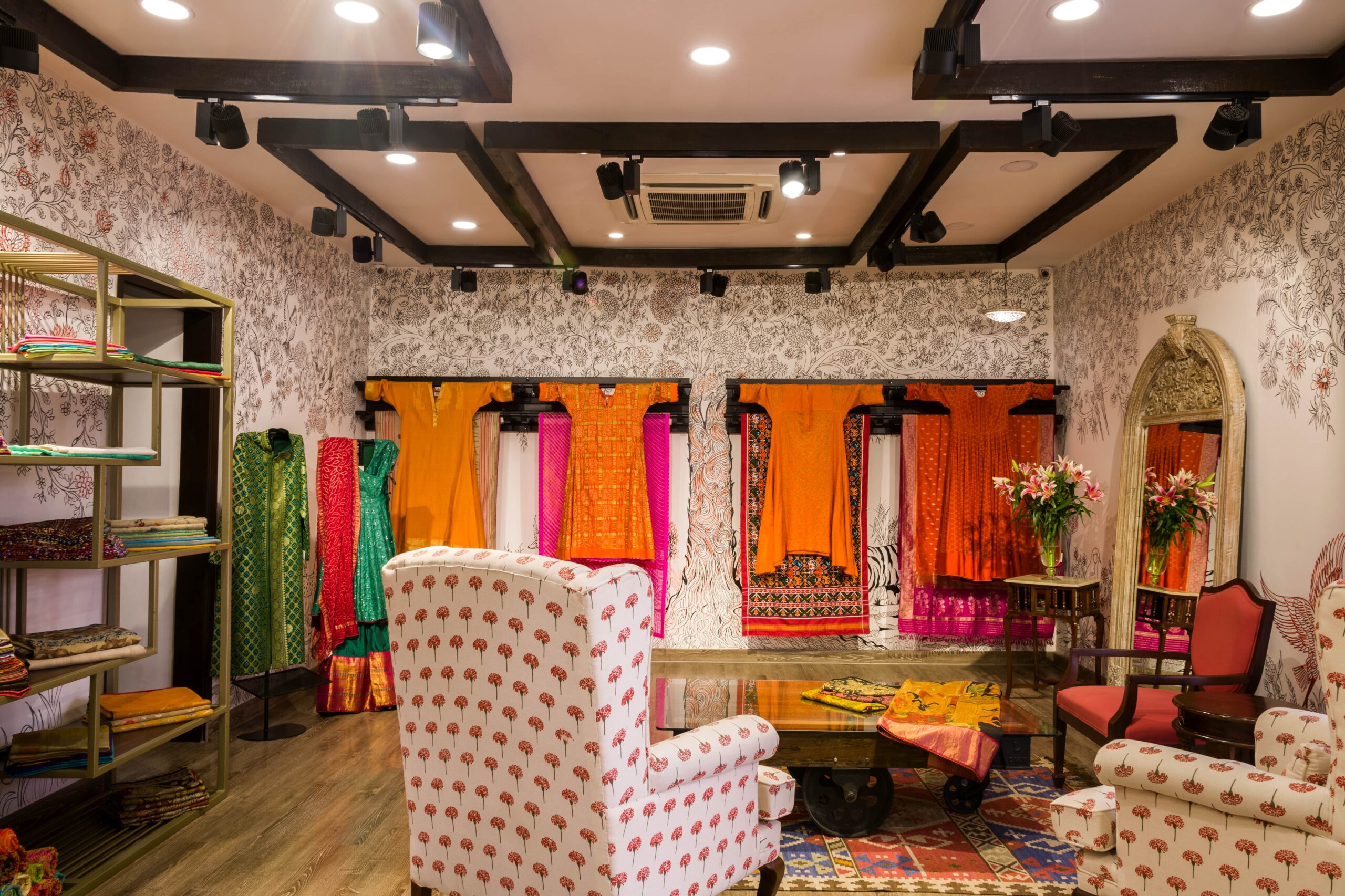
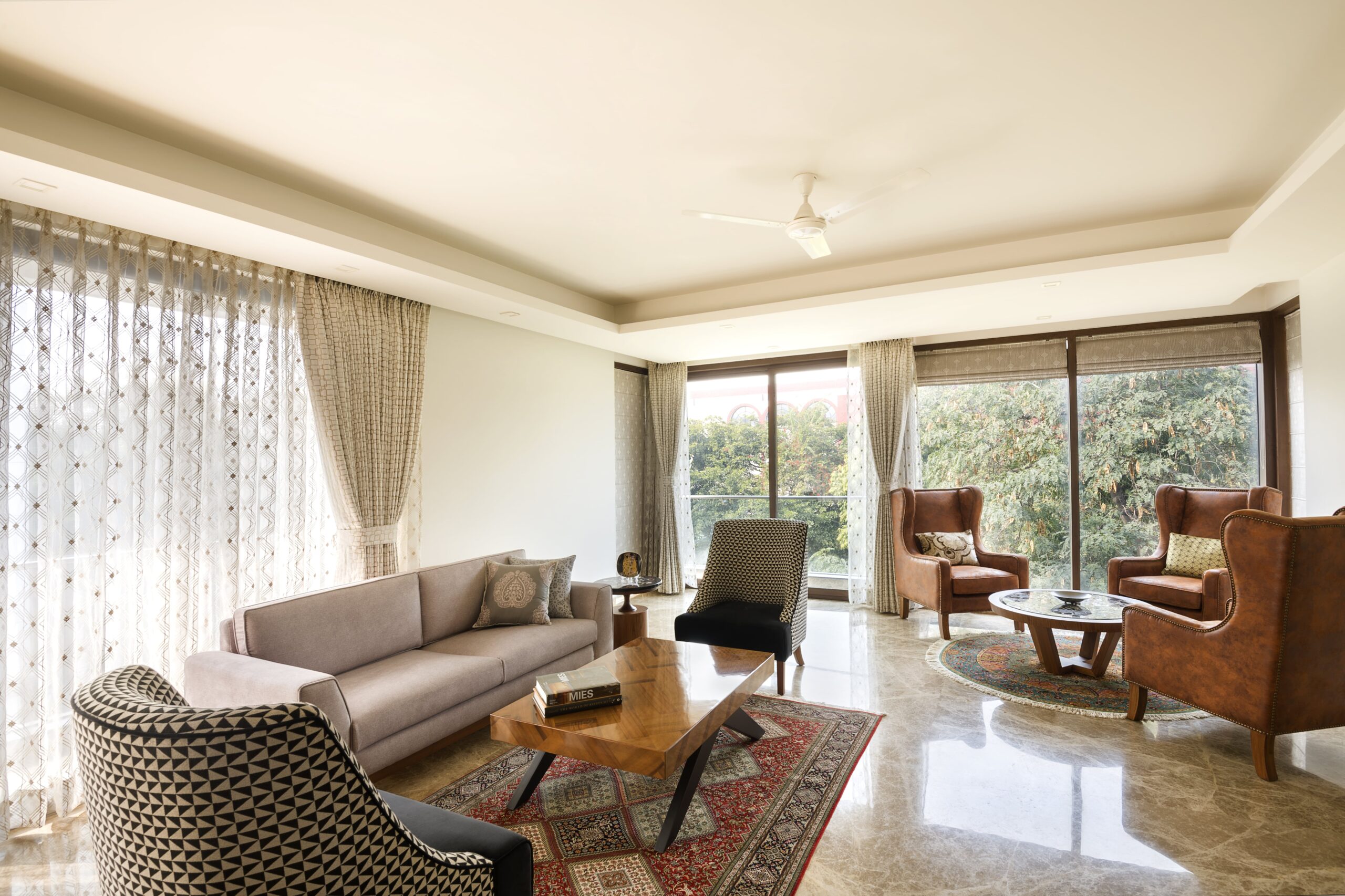
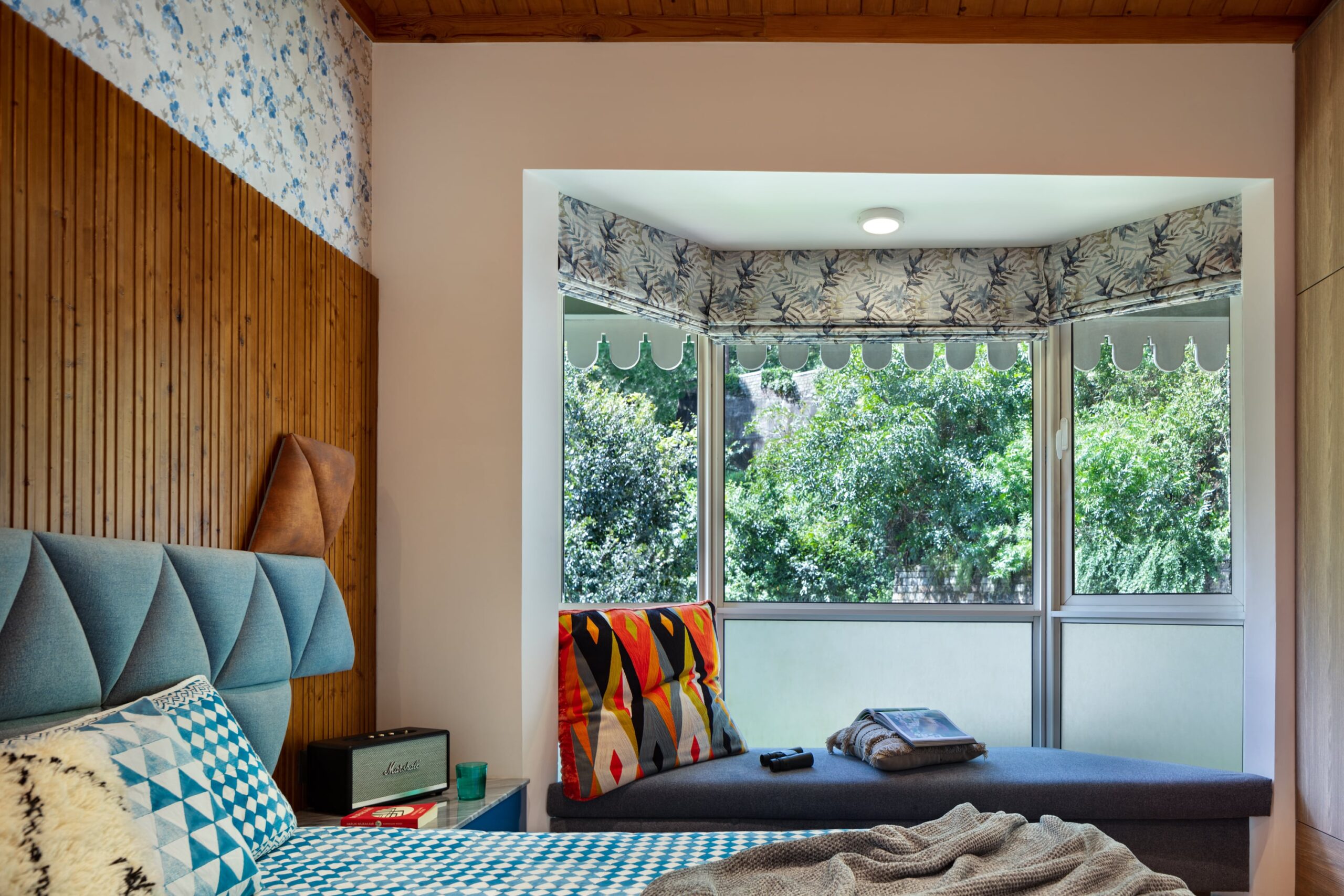
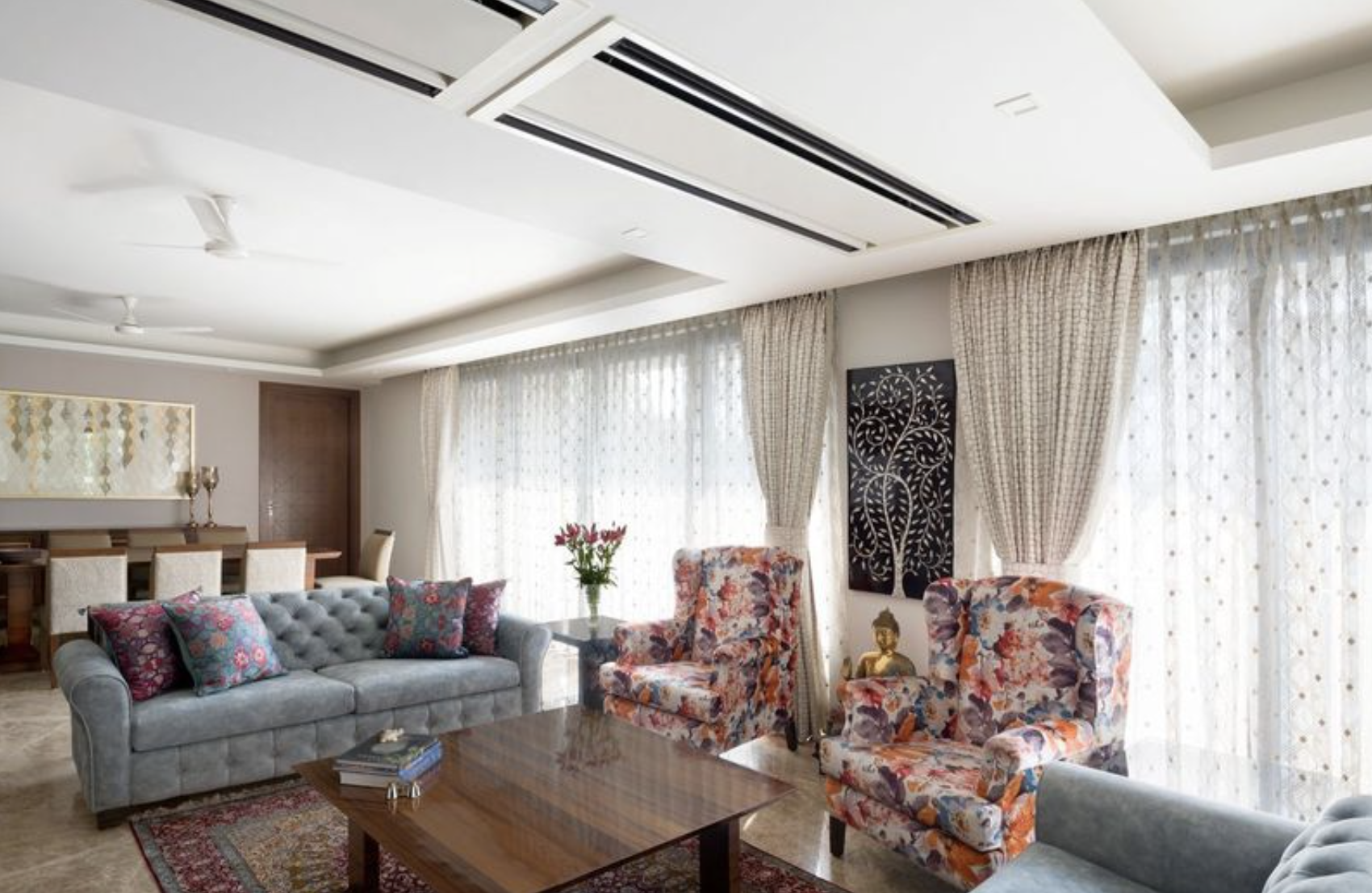

 Using natural materials like wood uniquely in this earthy bedroom from our project, Treetops, New Delhi.
Using natural materials like wood uniquely in this earthy bedroom from our project, Treetops, New Delhi.  Calm, earthy tones used in the Sattva House Formal Living Area exude natural elegance and tranquillity.
Calm, earthy tones used in the Sattva House Formal Living Area exude natural elegance and tranquillity. Combining Indian culture with modern minimalism in the Gaurang Store with balanced use of cultural elements, natural materials and minimalistic furniture.
Combining Indian culture with modern minimalism in the Gaurang Store with balanced use of cultural elements, natural materials and minimalistic furniture.  R-615 Residence showcases personalised pieces on the walls
R-615 Residence showcases personalised pieces on the walls Contrasting dichotomy of colours and textures with the contemporary bar unit in our project, Rue 32, New Delhi.
Contrasting dichotomy of colours and textures with the contemporary bar unit in our project, Rue 32, New Delhi.  The living area of ‘Valley of Dreams’ Kasauli is peppered with memorabilia and art, adding personality and individuality to the space.
The living area of ‘Valley of Dreams’ Kasauli is peppered with memorabilia and art, adding personality and individuality to the space.